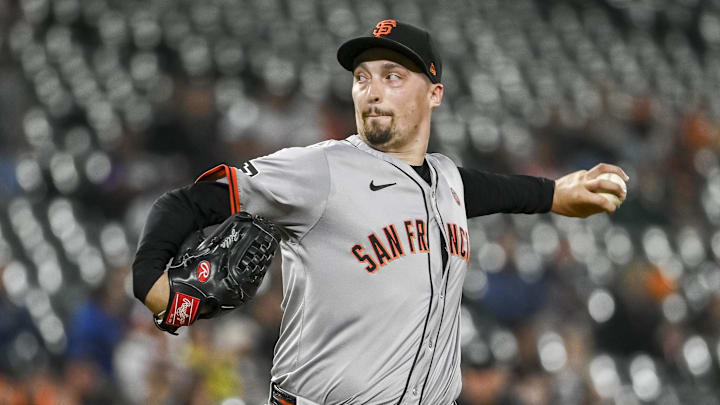San Francisco Giants Have Decision To Make About Blake Snell's Contractual Status

The San Francisco Giants have gotten their money's worth on the off-season signing of reigning NL Cy Young winner Blake Snell to a two-year contract. After overcoming his slow start caused by signing late in spring training, Snell has gone 4-0 in his last 13 starts with a 1.33 ERA, striking out 105 batters in just 74.1 innings. His season ERA has come down to just 3.31 and he’s cemented himself as the best pitcher in the organization, outperforming even last season’s Cy Young runner-up Logan Webb (12-10, 3.53 ERA).
Despite the exceptional performance, there’s no guarantee that the Giants will retain Snell’s services for 2025. The 31-year-old, under contract for $38.5M next season (a $30M salary and a $8.5M signing bonus), has a player opt-out that he’s likely to exercise now that he’s positioned to be the best left-handed starter on the open market this upcoming offseason.
So the question for San Francisco becomes: Do you re-sign Snell to a contract extension?
The case to resign Blake Snell
There are two arguments to be made for reaching a long-term extension with Blake Snell: the organization’s depth and the lack of stars on the team.
Snell has proven that he’s better than any other starter on the roster and would be tapped for game one of a playoff series. A rotation of Snell, Webb, Jordan Hicks, Robbie Ray, and Kyle Harrison has the potential of being one of the best in the National League West, a division the Giants have won once in the last decade.
Additionally, bringing back Snell to join the recently extended Matt Chapman gives the team two stars to build around, something the organization has tried and failed to do in recent seasons. San Francisco was heavily involved in the free agency of slugger Aaron Judge, infielders Bryce Harper and Carlos Correa, pitcher Yoshinobu Yamamoto, and two-way sensation Shohei Ohtani, going 0-5 in those chases.
In an era where attendance for most MLB teams is climbing, the Giants are drawing only 2,000 more fans than in previous seasons, on track to barely finish in the top ten for attendance despite being in one of the largest markets and having what some consider the best stadium in baseball in Oracle Park. Having two top-tier stars to build around can do wonders for both the performance on the field as well as at the ticket booth.
There’s a compensation angle here, as well - since Snell was given a qualifying offer last season by the San Diego Padres, one he rejected, the Padres received a draft pick in compensation for his signing and the Giants forfeited a third-round pick and international bonus pool space. The Giants will be unable to offer a qualifying offer to Snell; players can only be given a qualifying offer once in their careers.
The case against bringing back Blake Snell
There are two primary concerns with extending Snell: the money required to do so and the threat of age-related decline.
Snell is represented by super agent Scott Boras, and despite the team’s recent success with signing fellow Boras client Matt Chapman to a multi-year extension, Boras clients don’t often sign before reaching free agency. To sign Snell to a long-term extension is reportedly going to take a top-tier financial offer; while the team has the salary space for another massive contract, there are risks with doing so: Father Time catches up with everyone eventually.
And of all teams, San Francisco has seen age-related declines hit pitching stars quickly. Madison Bumgarner, Tim Lincecum, and Matt Cain all retired in their early 30s despite being some of the most dominant pitchers of their eras. Lincecum won back-to-back Cy Young awards at ages 24 and 25 but was done as a quality starter after age 27 and out of the league just four years later. Bumgarner produced through his age 29 seasons with San Francisco but gave Arizona four seasons of a 5.23 ERA before being unceremoniously designated for assignment last season. Matt Cain was an absolute horse for San Francisco, making 30 or more starts for eight consecutive seasons, but never had an ERA under 4.00 after his age-27 season and was out of the league after his age-32 season.
Snell, who turns 32 in December, doesn’t have the career workloads of those other pitchers with just 1090.2 innings across his nine years in the league. But he is at the age where nagging injuries and age-related decline begin hitting major league players.
Is a long-term extension with a no-trade clause for Snell a wise course of action? That’s for the Giants front office, or executive board, to decide.
